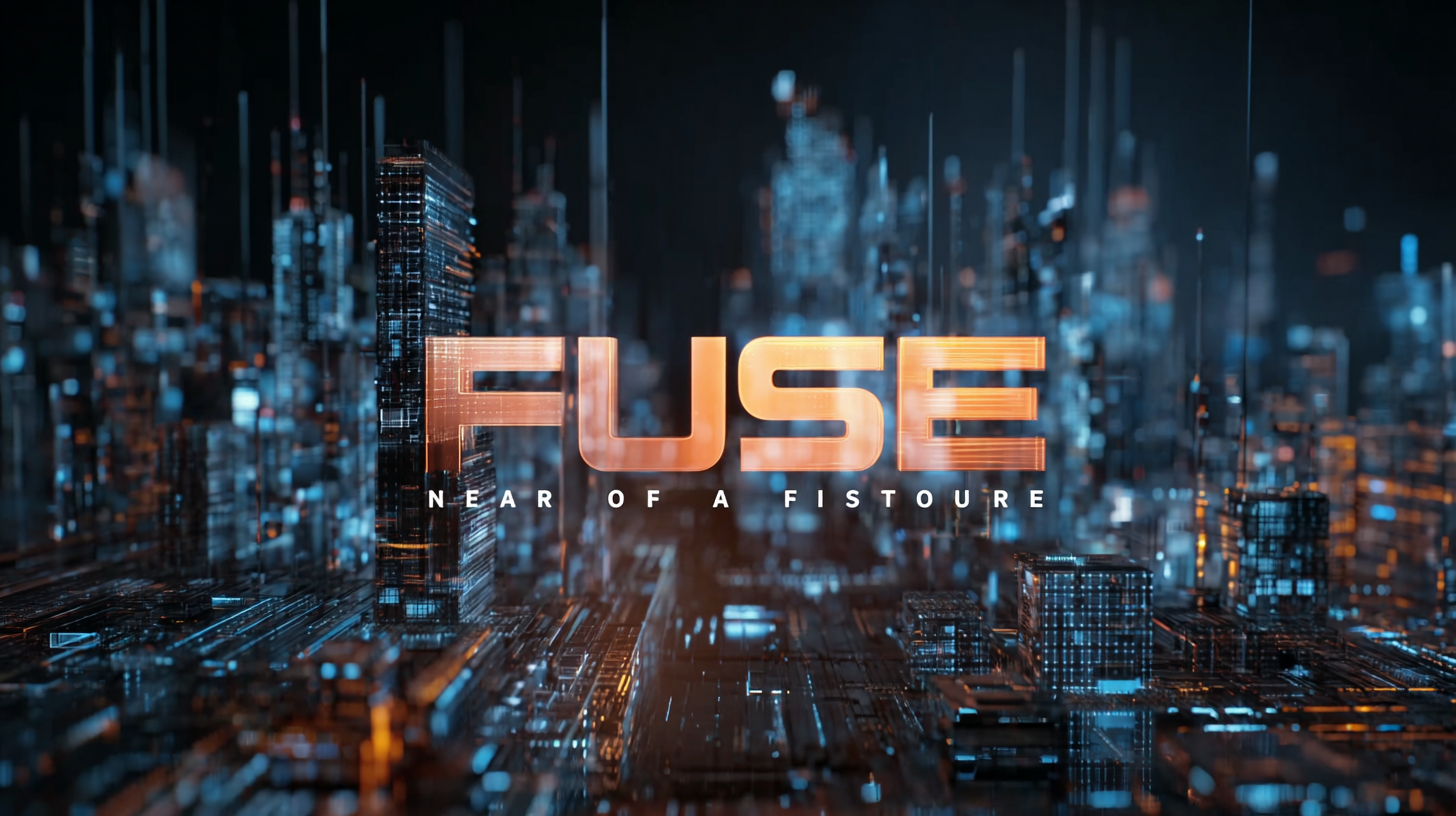
-
Home
-
About Us
-
Products
-
News
-
Blog
-
Contact Us
Leave Your Message

As we venture into the future of electrical components, the NH fuse stands out as a crucial element in safeguarding electrical systems from overloads and short circuits. According to a recent report by the International Electrotechnical Commission, the global fuse market is projected to grow significantly, reaching $20 billion by 2025, driven largely by advancements in electrical safety standards and the increasing demand for renewable energy sources. This growth presents opportunities for innovations in NH fuse technology, particularly in areas of efficiency, integration with smart grid systems, and enhanced materials. With the rise of alternative energy solutions and a fast-evolving electrical landscape, understanding the anticipated technological innovations surrounding NH fuses is essential for industry stakeholders looking to stay ahead in an increasingly complex market.

As we look ahead to 2025, the NH fuse technology sector is on the brink of a transformative shift. Emerging trends indicate that advancements in materials science will significantly enhance the performance and reliability of NH fuses. According to a recent report by MarketsandMarkets, the global fuse market is anticipated to grow at a CAGR of 5.6%, highlighting the increasing demand for innovative protection solutions in electrical systems. Key players are investing in smart-fuse technology that offers real-time monitoring and diagnostic capabilities, enabling quicker responses to electrical failures.
Moreover, sustainability is becoming a central theme in NH fuse innovations. Manufacturers are focusing on eco-friendly materials and energy-efficient designs to align with global sustainability goals. The European Commission's commitment to reducing carbon emissions by 55% by 2030 has propelled this trend, pushing industries to seek greener alternatives.
Tips: When considering NH fuse technology for your projects, prioritize suppliers that demonstrate a commitment to sustainability and innovation. Additionally, explore solutions with built-in smart functionalities, as they can enhance operational efficiency and reduce downtime. Lastly, keep an eye on regulatory standards; staying informed on compliance can significantly influence your project's success in the evolving electrical landscape.

The integration of the Internet of Things (IoT) into NH fuses is poised to revolutionize their performance and application in the near future. As IoT technologies continue to advance, NH fuses will likely see enhanced monitoring capabilities, ensuring their operational effectiveness and safety. For instance, the implementation of sensors that can relay real-time data on temperature, current, and potential overloads can empower users to initiate preventive measures before failures occur. This connectivity not only facilitates immediate insights but also fosters predictive maintenance strategies, reducing downtime and increasing system reliability.
Moreover, the anticipated fusion of smart materials and IoT in the realm of NH fuses could lead to unprecedented performance improvements. By leveraging cutting-edge manufacturing techniques and materials science, such as high-entropy alloys that have shown exceptional catalytic properties, the next generation of NH fuses might exhibit superior functionality and durability. As seen in recent innovations, such as the integration of advanced thermal storage systems or the modifications in electrocatalytic processes, similar approaches could optimize the efficiency of NH fuses, making them more adaptable to the dynamic demands of modern electrical systems. Integrating IoT with these advanced materials could mark a significant step towards creating more intelligent, responsive power distribution systems.
As we look toward 2025, the integration of artificial intelligence (AI) into the maintenance of NH fuses is set to revolutionize industry practices.
Predictive maintenance, relying on AI-driven analytics, offers an innovative approach to enhancing the reliability of these critical components.
According to a report from Allied Market Research, the predictive maintenance market is expected to reach $19.4 billion by 2025, indicating a growing trend in industries recognizing the importance of data-driven decision-making for equipment reliability.
AI algorithms can analyze vast amounts of historical and real-time data to predict potential failures before they occur.
This shift from reactive to proactive maintenance not only extends the lifespan of NH fuses but also reduces downtime and operational costs.
A study by the International Society of Automation highlighted that predictive maintenance can lead to a reduction in maintenance costs by 30% to 50%, further emphasizing the value of leveraging AI technologies.
As we advance, industries utilizing predictive maintenance tools will likely experience increased efficiency and enhanced safety standards, paving the way for a more reliable power distribution infrastructure.
As we move towards 2025, sustainability is becoming a cornerstone of innovation in electrical components, particularly with NH fuses. These devices are critical for safe electrical distribution, and the industry is witnessing a surge in eco-friendly designs that align with global sustainability goals. According to a report by the International Energy Agency (IEA), the shift towards green technologies could cut carbon emissions from the electrical sector by up to 70% by 2030. This trend includes the development of NH fuses made with recyclable materials, reducing waste while maintaining high performance and safety standards.
One exciting advancement is the integration of smart technology into NH fuses, which allows for better energy management and optimization. Smart fuses can automatically detect overloads and disconnect, thus preventing damage and enhancing the longevity of electrical systems. A recent market study indicates that the demand for smart electrical components will grow by 45% annually, emphasizing the role NH fuses will play in this transformation.
**Tip:** When selecting NH fuses, consider those with eco-friendly certifications to ensure they meet the latest sustainability standards. Additionally, look for fuses that feature built-in monitoring systems to help optimize energy use and minimize waste. This not only benefits the environment but can also lead to significant cost savings in the long run.
| Innovation Type | Description | Anticipated Impact | Sustainability Index |
|---|---|---|---|
| Biodegradable Materials | Development of NH fuses using plant-based biodegradable polymers. | Reduced environmental footprint and improved waste management. | 8/10 |
| Smart Sensing Technology | Integration of IoT sensors for real-time monitoring and analytics. | Enhanced performance monitoring and predictive maintenance. | 9/10 |
| Energy Recovery Systems | Fuses that can recover energy during overload conditions. | Improved energy efficiency and reduced power loss. | 7/10 |
| Advanced Arc Extinguishing | Innovative materials and designs for effective arc suppression. | Increased safety and reliability in high voltage systems. | 8/10 |
| Phase Change Materials | Incorporation of phase change materials for better thermal management. | Prolongs lifespan and enhances performance stability. | 8/10 |
As we approach 2025, the global NH fuse market is anticipated to undergo significant transformations driven by technological advancements and competitive strategies. According to a recent market analysis report by Research and Markets, the NH fuse market is expected to grow at a compound annual growth rate (CAGR) of 6.2% from 2023 to 2028. This growth is largely attributed to rising energy demands and an increasing focus on renewable energy systems, which are shifting the way electrical components are selected and used.

Leading manufacturers are poised to enhance their competitive edge by investing in research and development. For instance, companies like Siemens and Schneider Electric are exploring intelligent fusing technologies that incorporate smart metering and connectivity. This will not only improve safety and efficiency but also align with the growing trend towards the Internet of Things (IoT). It's crucial for stakeholders to stay updated with these innovations as customer preferences shift towards more sustainable and intelligent solutions.
Tip: To stay ahead in the competitive landscape, companies should consider adopting a hybrid approach that combines traditional manufacturing techniques with new, digital innovations, enhancing both product quality and customer engagement. Another tip is to actively participate in industry forums and workshops to keep abreast of the latest technological trends and regulatory changes, ensuring compliance and strategic alignment.